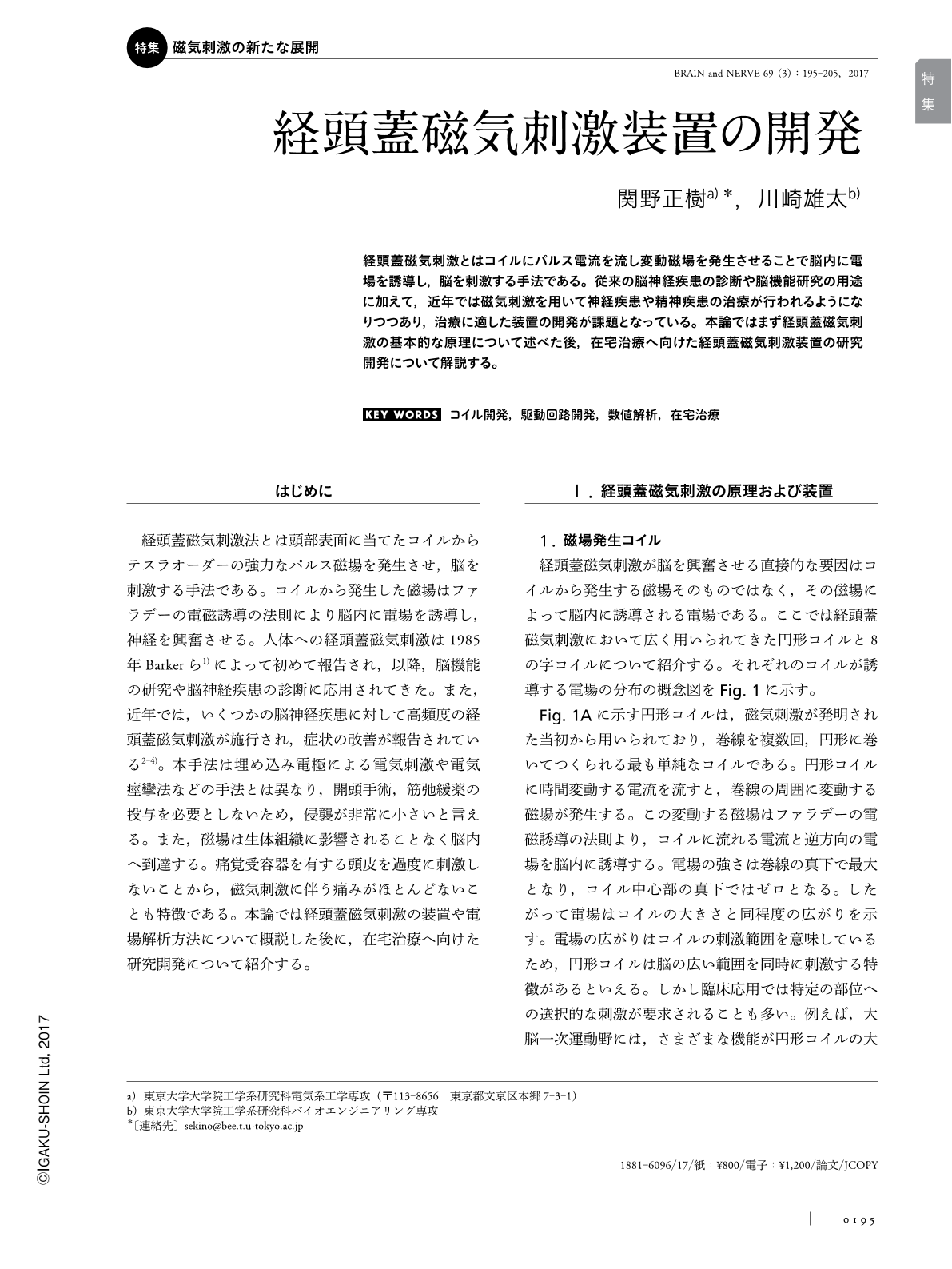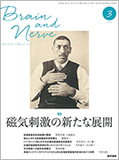Japanese
English
- 有料閲覧
- Abstract 文献概要
- 1ページ目 Look Inside
- 参考文献 Reference
経頭蓋磁気刺激とはコイルにパルス電流を流し変動磁場を発生させることで脳内に電場を誘導し,脳を刺激する手法である。従来の脳神経疾患の診断や脳機能研究の用途に加えて,近年では磁気刺激を用いて神経疾患や精神疾患の治療が行われるようになりつつあり,治療に適した装置の開発が課題となっている。本論ではまず経頭蓋磁気刺激の基本的な原理について述べた後,在宅治療へ向けた経頭蓋磁気刺激装置の研究開発について解説する。
Abstract
Transcranial magnetic stimulation (TMS) has been used in research into brain function. Recently, TMS has also become an option in treating brain dysfunction. The equipment consists of a coil and a driving circuit. The most widely used coil is a figure-8 coil because of its good resolution, and the most widely used circuit generates a biphasic pulse for repetitive stimulation. To assess the induced electric field distribution in the brain, we conducted simulations using a coil and constructed a brain model from a MR image. Finally, we introduce the coils we have developed for treatment in the home. These include an eccentric figure-8 coil and a dome-shaped coil. Reducing the size of the equipment is one of the chief technical challenges of using rTMS therapeutically in the home. An eccentric figure-8 coil can be driven with a lower current than a conventional figure-8 coil because of its good efficiency, which results in a smaller driving circuit. Conventional figure-8 coils stimulate a highly localized area, therefore making it difficult to ensure that a particular area receives stimulation without the assistance of an infrared camera support system, which is large and expensive. A dome-shaped coil is capable of stimulating a larger area and is robust against errors of positioning caused by the simple navigation system used in the home.

Copyright © 2017, Igaku-Shoin Ltd. All rights reserved.


